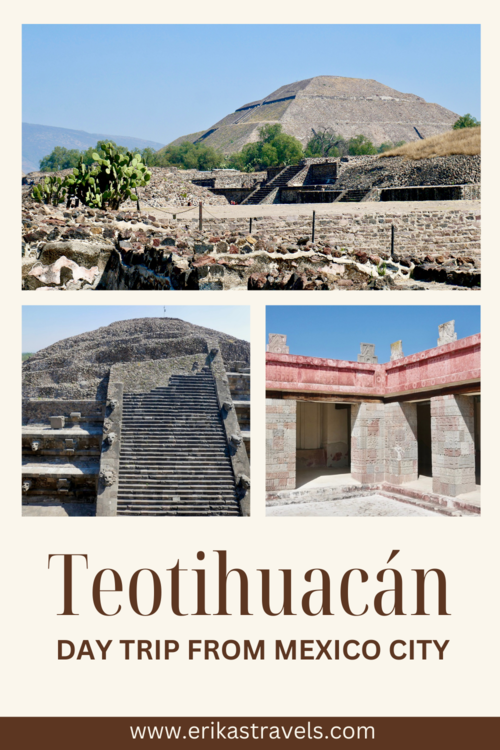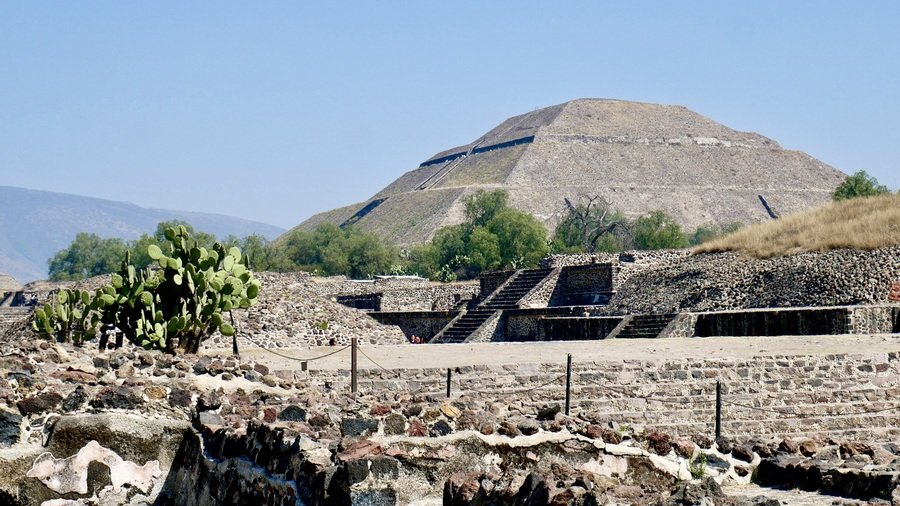
Visiting the Teotihuacán Pyramids in Mexico
Before the rise of Mexico City, there was Teotihuacán.
Until its mysterious collapse in 600AD, the city of Teotihuacán was the heart and soul of Mesoamerica. At its zenith, it housed the largest and most advanced civilization on the North American continent.
When the Aztecs came across the abandoned complex of temples and pyramids in the 15th century, they couldn’t believe their eyes. They named it Teotihuacán, meaning “birthplace of the gods.”
A place this grand, they presumed, must have been central to the creation of the Universe.
Teotihuacán Ruins: An Overview
The once-thriving city of Teotihuacán was first developed around 100BC. At the time of its construction, it was an important center for culture, art, and history.
The city’s architects built according to a rigorous design plan, radiating out from a pyramid-adorned central plaza and promenade. Laid out on a geometrical grid, Teotihuacán featured a complex network of irrigation canals that drew water from the nearby San Juan River.
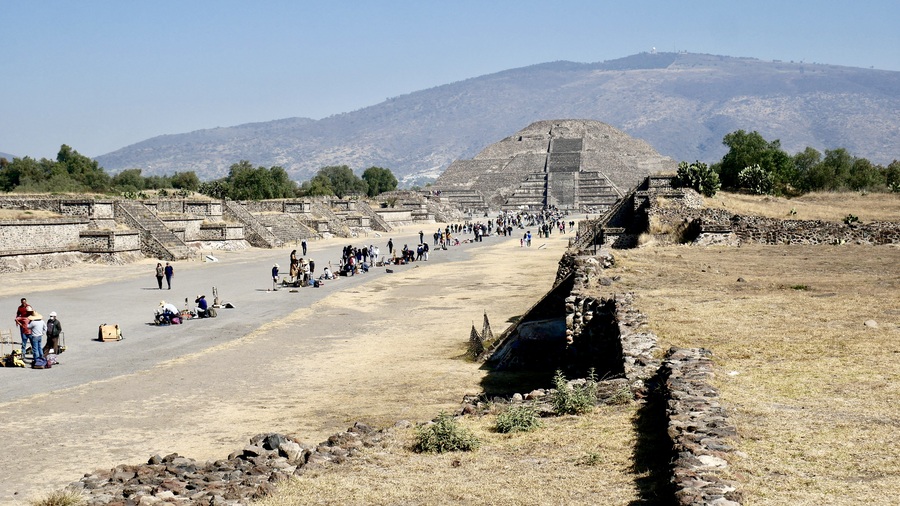
Though most notable for its towering pyramids, excavations reveal that the ancient city also contained a sprawling residential area.
Teotihuacán was a cosmopolitan center in its heyday. During its peak, it was the sixth most populous city in the world. Historians suggest that Teotihuacán once housed around 200,000 people.
By the seventh century AD, however, Teotihuacán’s original inhabitants mysteriously abandoned the city.
Who Built Teotihuacán?
The origin of Teotihuacán is up for debate, but its influence on the country’s psyche and identity remains undeniable.
Little is known about the people responsible for building this vast and unique city. Many assume that Teotihuacán was built by the Aztecs. Others attribute it to the Maya Civilization.
Until my most recent visit to the area, I too assumed that the Aztecs were the founders of Central Mexico’s largest and most important archaeological site.
But in truth, the Teotihuacán pyramids predate both the Mayans and the Aztecs.
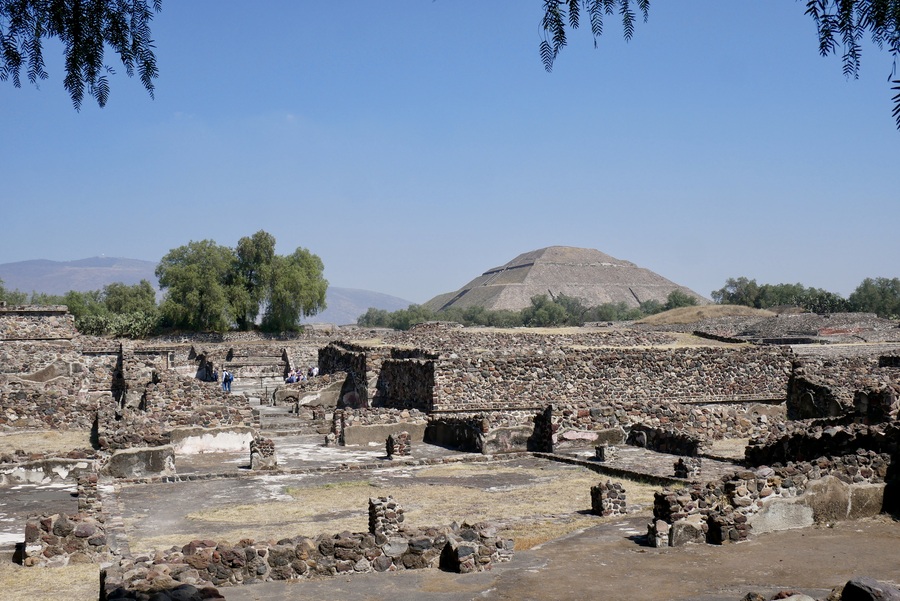
The ethnicity of Teotihuacán’s inhabitants has been debated for centuries. Some scholars point to the Nahua, Otomi or Totonac. Others suggest the Toltecs.
And yet no one knows for sure who to credit with building the site’s extraordinary temples and pyramids.
Things to See in Teotihuacán
Teotihuacán’s ruins have achieved UNESCO World Heritage Site status, alongside the Aztec-built Templo Mayor and Xochimilco Canals in Mexico City.
There are numerous noteworthy places to see within the archaeological site of Teotihuacán—from mural-clad palaces to towering pyramids.
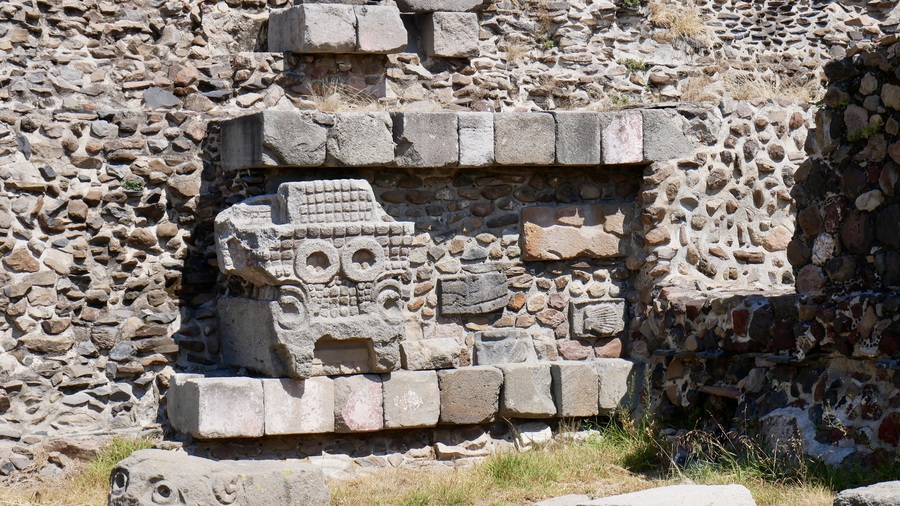
The site’s main places of interest surround the Avenue of the Dead. They include the Pyramid of the Sun, the Pyramid of the Moon, the Palace of Quetzalpapálotl, the West Plaza, and the Pyramid of Quetzacoatl.
-
Avenue of the Dead
The Avenue of the Dead (Calle de los Muertos) runs through the heart of Teotihuacán, linking the area’s main places of interest.
A grand promenade, it leads directly to the front steps of the iconic Pyramid of the Moon. At its southern end, you’ll find the Pyramid of Quetzacoatl and the Teotihuacán Museum.
The Aztecs, who arrived at the site long after the departure of Teotihuacán’s original inhabitants, named the avenue after what they believed were burial sites. Historians now concur that the low-lying buildings were probably residences.
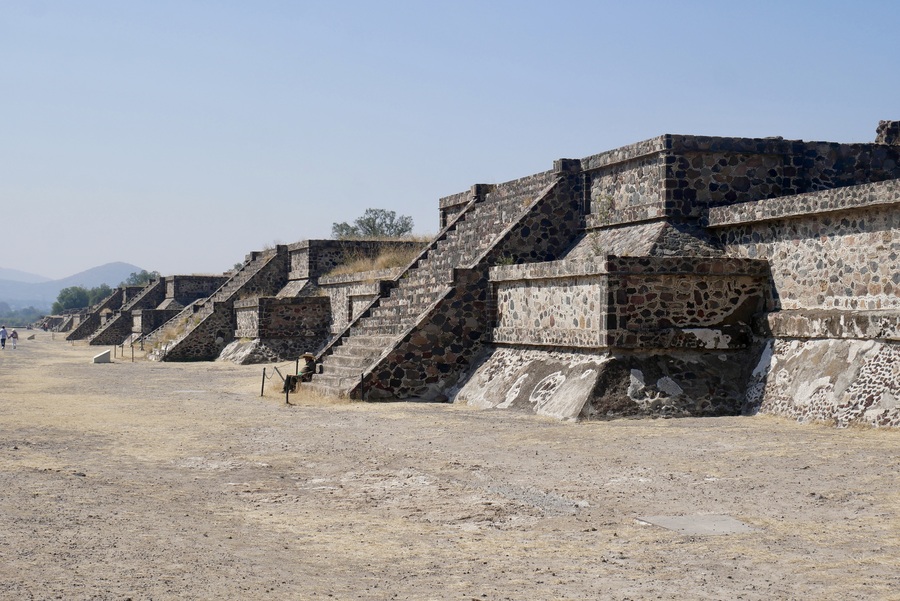
Walking the entire Avenue of the Dead is a top thing to do when visiting the Teotihuacán pyramids. The avenue is 2.5 miles long and is entirely exposed to the sun. Be sure to lather up with sunscreen before exploring the area.
-
Teotihuacán Pyramid of the Sun
The Pyramid of the Sun dates back to 100 AD. It is one of the largest structures of its type in the Western Hemisphere (though it is only half the height of the Great Pyramid in Giza). The massive structure rises 216 feet above ground and measures approximately 720 by 760 feet at its base. It contains about one million cubic yards of compacted volcanic rocks.
The Pyramid of the Sun’s purpose remains largely a matter of conjecture. Archaeologists believe that there was once a temple atop the pyramid, which suggests it could have been constructed for spiritual purposes.
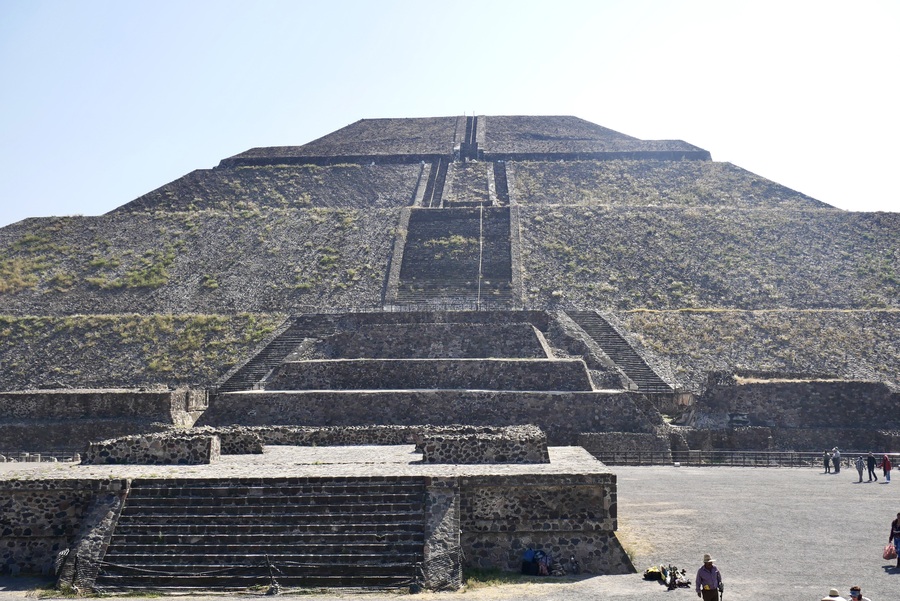
Though I was able to climb the Pyramid of the Sun during my first visit to the area in 2003, the massive stone structure now remains cordoned off indefinitely.
-
Pyramid of the Moon in Teotihuacán
Although smaller than the site’s famous Pyramid of the Sun, the Pyramid of the Moon is just as iconic. It towers above the archeological site’s northern reaches, mimicking the outline of nearby Cerro Gordo.
The Pyramid of the Moon lies at the far northern end of the temple complex.
Historians allege that the ritual temple, dedicated to the deity of water, fertility, and creation, was once used for ceremonial purposes.
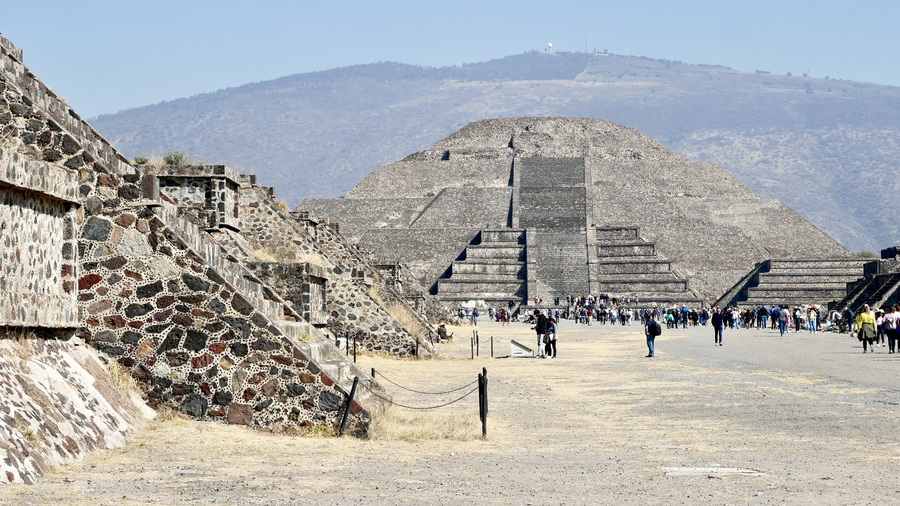
As with the Pyramid of the Sun, climbing atop the Pyramid of the Moon is currently forbidden.
-
Palace of Quetzalpapálotl
To the west of the Pyramid of the Moon, you’ll find the excavated ruins of the Quetzalpapálotl Palace. The exquisite palace dates back to 450AD, though it appears to be constructed above older ruins.
The Palace of Quetzalpapaálotl’s name comes from the reliefs of mythological birds engraved on its square courtyard pillars. With its murals and ornate carvings, the structure stands out as an architectural masterpiece. It illustrates the level of artistic ability developed in the pre-Hispanic world.
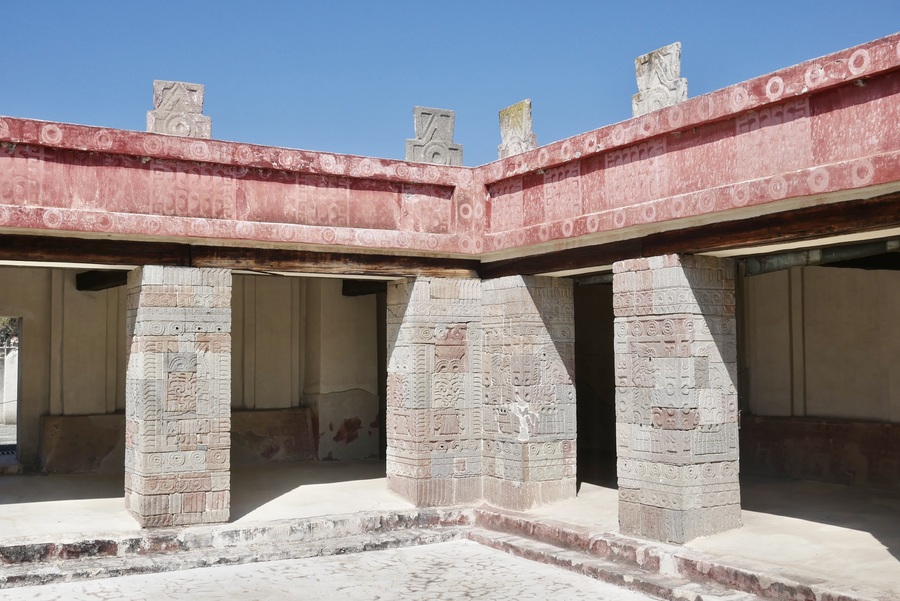
The palace is, without a doubt, the best-preserved building in Teotihuacán. Between 2009 and 2011, Mexico’s National Institute of Anthropology and History painstakingly restored Quetzalpapálotl’s murals.
The exact role of the Quetzalpapálotl Palace is unclear, but some think that it could have been home to a high-ranking priest, given its location.
-
Puma Mural
Archaeologists first discovered Teotihuacán’s Puma Mural in 1963. The ancient art installation lies on the the east side of the Avenue of the Dead. It is part of a group of platforms and temples known as the Puma Complex.
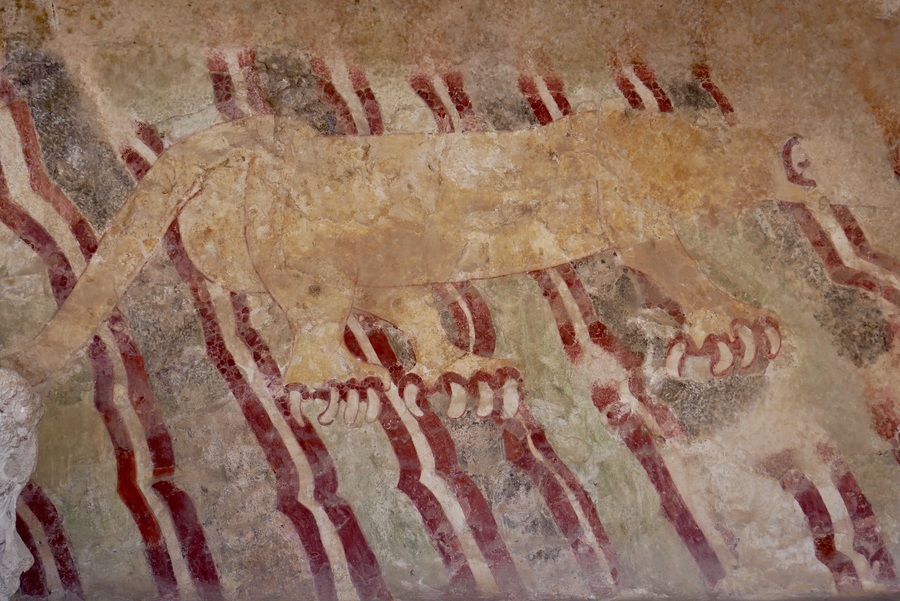
The mural can be found en-route to the Pyramid of the Moon, behind a protective layer of glass.
-
West Plaza Complex
The West Plaza Complex is not one of Teotihuacán’s main attractions. As a result, I didn’t find a lot of information on the oft-overlooked area.
At the West Plaza Complex, a ruined platform boasts reliefs of jaguar heads along its staircase.
Below, two serpent heads with forked tongues adorn a lower set of stairs. The stone heads are covered in pink stucco.
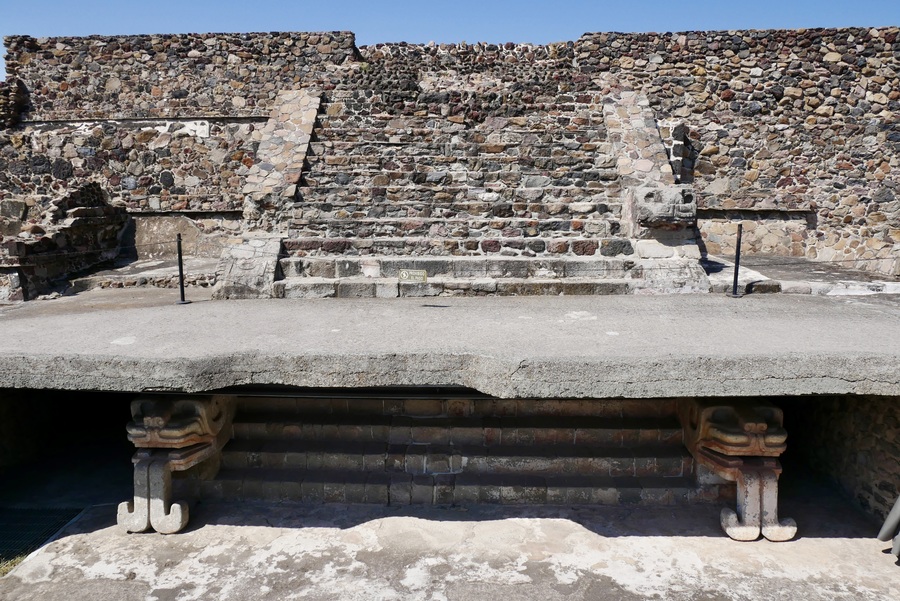
The West Plaza Complex’s unique multi-layered ruins are worth exploring as you make your way down the Avenue of the Dead.
-
Pyramid of Quetzacoatl
Along the southern part of the Avenue of the Dead, you’ll find a large square courtyard known as the Citadel. Within it, stands the splendid Pyramid of Quetzalcóatl (Pyramid of the Feathered Serpent).
Though not as grand as the pyramids of the Sun and Moon, the Pyramid of Quetzacoatl is no less impressive.
The temple gets its name from the carved heads that adorn its façade.
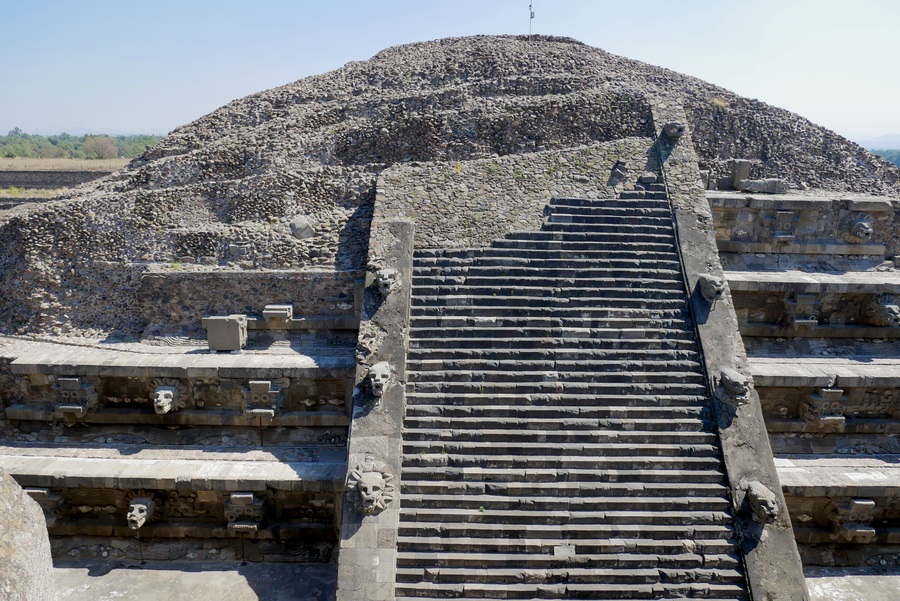
The staircase that ascends the Pyramid of Quetzacoatl is strictly off-limits. As with the other Teotihuacán Pyramids, recent preservation efforts have sought to minimize the negative impact of tourism in the area.
However, a tiered platform stands directly in front of the Quetzacoatle Pyramid. You can climb up its stairs for outstanding eye-level views of the pyramid and its statues.
-
The Teotihuacán Museum
The small Teotihuacán Museum offers insight into the area’s history and archaeology.
It contains artifacts uncovered at the site, as well as models demonstrating how the city looked in centuries past.
If you have time to visit during your Mexico City day trip, it is worth stopping in for a look.
That being said, if you’re pressed for time, I would prioritize the site itself.
Places to Stay near the Teotihuacán Pyramids
Though most people visit the ancient ruins as a day trip from Mexico City, you can choose to spend the night in nearby San Juan Teotihuacán for unparalleled access to the archaeological site.
Staying overnight allows you to visit the pyramids early, before the crowds.
Top places to stay nearby include El Sueño de Quetzacoatl (budget) Hotel Boutique Rancho San Juan Teotihuacán (midrange) and Hotel Quinto Sol (higher end).
Getting to Teotihuacán from Mexico City
While organized tours of Teotihuacán are plentiful, it is relatively easy to catch a public bus to the ruins. During the day, hourly buses link Teotihuacán with Mexico City’s Terminal Norte. One-way tickets cost M$52. The trip lasts roughly an hour.
Alternatively, if you’re pressed for time, Uber is a relatively inexpensive option.
Teotihuacán Tours
If you’re someone who prefers leaving logistical details to others, visiting Teotihuacán as part of an organized tour can be especially attractive.
Tours offer ways of exploring the ruins from a different vantage point. You can book hot air balloon tours of Teotihuacán to see the complex from above, or early access tours to view the pyramids without large crowds.
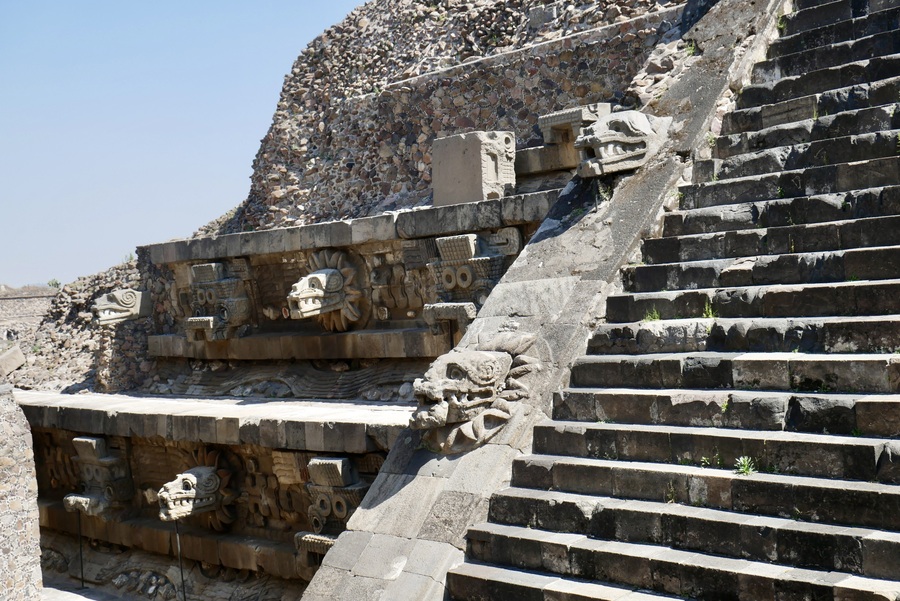
Most tours of the area include roundtrip transport from Mexico City. Some Teotihuacán tours also bring you tequila tasting and to the Basilica of Guadaloupe.
Teotihuacán Pyramid Hours and Entrance Fees
The cost of visiting Teotihuacán is relatively cheap. Admission to the site costs 80 MXN (US$4) for adults and is free for children under 13 years old. The entrance fee covers the Teotihuacán Museum, in addition to the entire archeological complex.
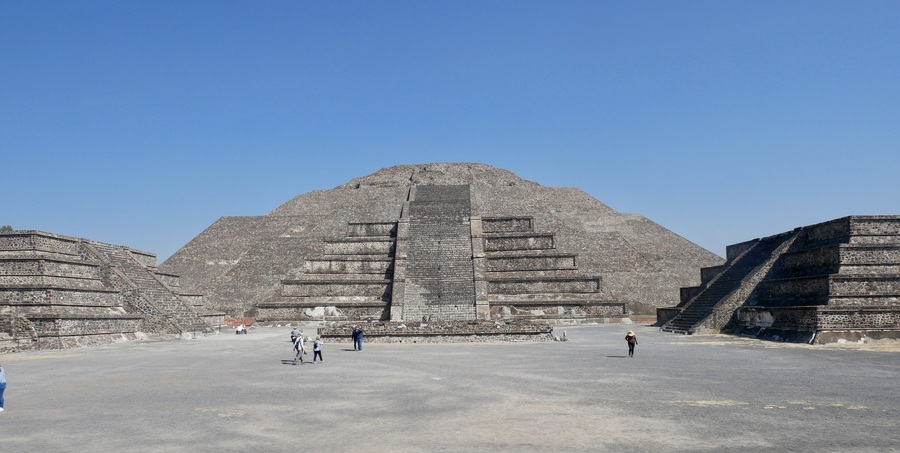
The Teotihuacán archaeological zone opens daily at 9am and closes at 5pm.
When to Visit Teotihuacán
The best months to travel to Teotihuacán are November through to May, when central Mexico experiences cooler temperatures and minimal rainfall. Summer is humid and characterized by abundant precipitation. It is probably the worst time to visit the pyramids.
In truth, though, the ruins are great to visit year-round. Just be sure to bring lots of sunscreen, as they are totally exposed to the elements.
***
Though Teotihuacán’s significance is undeniable, the city does not easily leak its secrets.
Despite extensive research, nobody knows for sure about the identity of its builders, or the language they spoke, or the way they organized their government. Teotihuacán’s origins, history, and culture remain largely up for debate.
Among all the mystery surrounding the site, however, there’s one thing I know for sure:
Visiting the Teotihuacán Pyaramids should be an absolute priority when traveling to Mexico City.
___________________________
DID YOU ENJOY THIS GUIDE TO THE TEOTIHUACÁN PYRAMIDS? PIN IT!
